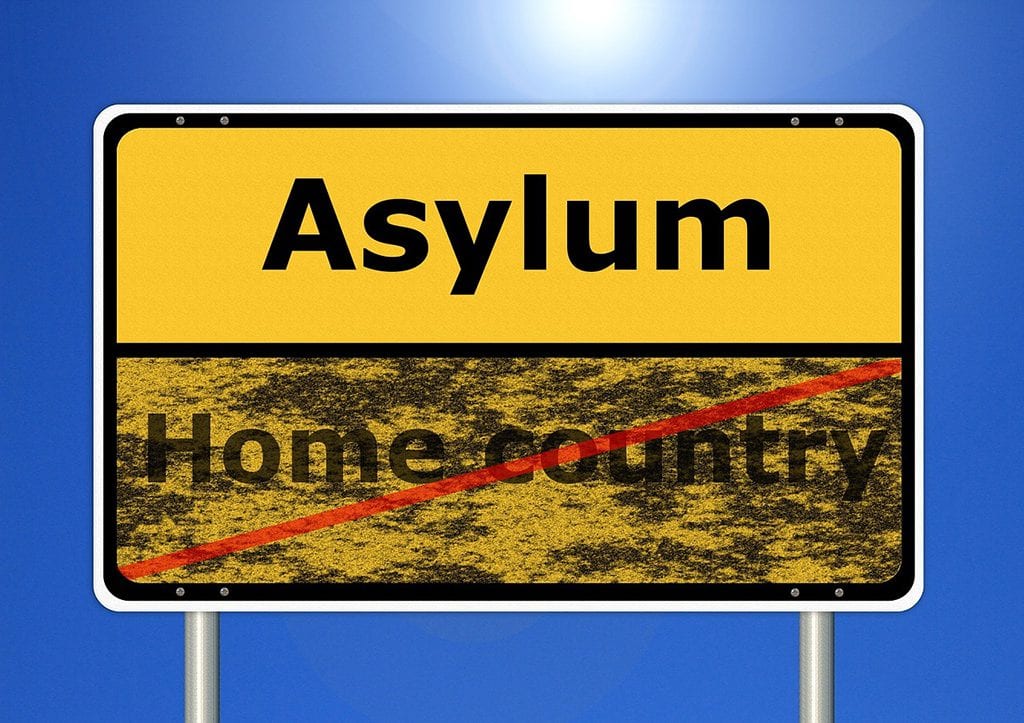Updated Oct 2023
Denmark & Switzerland Seize Asylum Seekers’ Valuable Assets
The Controversial Approach Unveiled
The controversial strategy adopted by Denmark and Switzerland represents a paradigm shift in the way nations address the challenges posed by an influx of asylum seekers. Departing from the traditional emphasis on humanitarian aid and integration, these countries have embarked on a path that intertwines economic considerations with ethical dilemmas.
As the global landscape witnesses unprecedented migration patterns, Denmark and Switzerland find themselves at the center of a heated debate regarding the dual facets of their approach. Supporters argue that seizing assets is a necessary response to the economic strain posed by the increasing number of asylum seekers. By doing so, they contend, these nations aim to ensure fiscal stability while upholding their duty to protect their citizens.
On the opposing side of the spectrum, critics vehemently decry this approach as a drastic measure that threatens the foundational principles of providing refuge to those escaping perilous circumstances. The ethical dimensions of seizing valuable assets from vulnerable individuals seeking safety become particularly poignant as the world grapples with the delicate balance between economic pragmatism and humanitarian values.
The Economic Rationale Behind Asset Seizures
Delving into the motivations behind asset seizures, it becomes evident that economic considerations play a pivotal role in Denmark and Switzerland’s controversial strategy. The sheer volume of asylum seekers can strain a host country’s resources, from housing to healthcare, leading proponents to argue that alternative measures are imperative to alleviate this burden.
Supporters of asset seizures posit that by tapping into the financial resources of asylum seekers, nations can offset the economic challenges associated with providing shelter, healthcare, and education. This perspective underscores the pragmatic need for a sustainable model that safeguards the economic well-being of the host country, especially in times of heightened migration.
Ethical Quandaries in Providing Refuge
However, the ethical implications of such an approach are complex and multifaceted. Critics question whether the ends justify the means, highlighting the potential violation of fundamental principles that define asylum and refuge. The act of seizing assets, they argue, challenges the very essence of providing a safe haven to those fleeing persecution, war, or life-threatening circumstances.
The clash between economic pragmatism and humanitarian values unfolds on a global stage, with Denmark and Switzerland serving as a focal point for this contentious dialogue. The ethical quandaries faced by these nations reverberate throughout the international community, prompting a critical examination of the principles that underpin the treatment of asylum seekers.
In the next sections, we will explore the impact of asset seizures on the lives of asylum seekers and delve into the legal landscape surrounding this controversial strategy. By examining these dimensions, we aim to provide a comprehensive understanding of the intricate tapestry woven by Denmark and Switzerland as they navigate the complex intersection of economics and ethics in the realm of asylum seekers.
The Financial Strain on Host Countries
To comprehend the controversial strategy embraced by Denmark and Switzerland, a pivotal aspect to scrutinize is the economic strain accompanying the task of hosting a substantial number of asylum seekers. As these nations confront the escalating influx, the financial burdens they shoulder have become a driving force behind the implementation of unconventional measures. This section ventures into the economic rationale that propels these nations to seek alternative solutions and the ensuing repercussions on asylum seekers.
Economic Considerations: A Driving Force
The economic considerations that underpin Denmark and Switzerland’s approach stem from the tangible challenges associated with hosting a large population of asylum seekers. From providing housing and healthcare to ensuring access to education, the financial strain on host countries is multifaceted. Both nations assert that the traditional models of humanitarian aid and integration may no longer be sustainable in the face of a rapidly increasing number of individuals seeking asylum.
By delving into the economic aspects, proponents argue that seizing assets becomes a pragmatic response to mitigate the strain on public resources. It is framed as a mechanism to redistribute the economic burden associated with supporting asylum seekers, aiming to safeguard the financial stability of the host countries. This economic imperative, while contentious, serves as a cornerstone in the ongoing discourse surrounding the treatment of asylum seekers.
The Human Toll of Asset Seizures
However, while economic considerations may offer a rationale for asset seizures, the impact on the individuals involved is profound. Asylum seekers, already navigating the complex terrain of displacement, find themselves ensnared in a policy that extends beyond fiscal concerns. This section aims to unveil the human side of the policy, delving into the ways in which asset seizures affect individuals grappling with the trauma of displacement.
Navigating Trauma and Loss
For asylum seekers, the experience of displacement is inherently traumatic, marked by the upheaval of familiar surroundings and the uncertainty of the future. The added dimension of having valuable assets seized intensifies the emotional toll, as individuals witness not only the loss of their homes and communities but also the forfeiture of possessions that carry sentimental and practical significance.
The policy’s impact extends beyond the tangible loss, reaching into the psychological realm as asylum seekers grapple with a sense of disempowerment and violation. The very act of seizing assets disrupts the delicate process of rebuilding lives, challenging the resilience of individuals who have already endured immense hardships.
Social and Psychological Ramifications
Moreover, the policy introduces social and psychological ramifications that reverberate within communities. The trust between asylum seekers and the host nation is strained, fostering an environment of uncertainty and fear. This section sheds light on the intricate web of consequences woven by the intersection of economic imperatives and the human stories of those seeking refuge.
In the subsequent sections, we will delve into the legal implications and international reactions surrounding the controversial strategy adopted by Denmark and Switzerland. By unraveling these layers, we aim to present a comprehensive exploration of the multifaceted dimensions that define this unprecedented approach to addressing the challenges posed by an increasing number of asylum seekers.
Striking a Balance Between Humanity and Economics
As Denmark and Switzerland navigate the intricate terrain of asylum seeker management, the clash between humanitarian values and economic pragmatism takes center stage. The decision to seize assets is positioned as an attempt to delicately balance fulfilling humanitarian duties while safeguarding economic stability. This section peels back the layers of this complex interplay, exploring the motivations behind the strategy and the consequential impact on the essence of refuge.
Balancing Act: A Quest for Equilibrium
For Denmark and Switzerland, the act of seizing assets is presented as a nuanced strategy born out of the necessity to strike a balance. The escalating numbers of asylum seekers, coupled with the economic strain on host countries, propel these nations to seek alternative solutions. The intent is clear – to fulfill their humanitarian duties by offering refuge while simultaneously addressing the economic implications of hosting a significant number of individuals seeking asylum.
Humanitarian Duties Amid Economic Realities
Proponents argue that in the face of economic challenges, a nation’s ability to extend humanitarian aid is contingent on maintaining fiscal stability. Seizing assets is portrayed as a means to safeguard the financial well-being of the host country, ensuring that it can continue to provide support to asylum seekers without compromising its own economic resilience.
Compromising the Essence of Refuge?
Yet, this approach is not without its critics. Detractors contend that the act of seizing assets compromises the very essence of providing refuge. They argue that by intertwining economic considerations with humanitarian obligations, nations risk diluting the foundational principles that define asylum and sanctuary. This section dives into the heart of the debate, exploring whether the quest for economic equilibrium undermines the core values that should guide the treatment of those seeking shelter.
International Reverberations: Global Responses
The ripple effect of Denmark and Switzerland’s strategy extends far beyond their borders. The international community has not remained passive observers; instead, it has engaged in a discourse that scrutinizes the ethical and legal dimensions of asset seizures from asylum seekers. This section examines the global response, providing insight into how nations worldwide are reacting to this unconventional approach.
Ethical Scrutiny and Human Rights Concerns
As the news of asset seizures permeates the global consciousness, concerns about human rights violations and ethical considerations come to the forefront. The actions of Denmark and Switzerland prompt a collective reflection on the values that underpin the treatment of vulnerable populations. This section delves into the ethical scrutiny placed upon these nations and the resonance it has within the broader international community.
Legal Implications: Navigating the Complex Web
Beyond ethical considerations, the legal implications of Denmark and Switzerland’s strategy are subject to intense scrutiny. This section unravels the complex legal web, examining whether these nations are in violation of international agreements and human rights standards. The actions of seizing assets from asylum seekers raise questions about the compatibility of such measures with established legal frameworks, adding another layer to the ongoing debate.
In the following sections, we will explore the historical context and global perspectives surrounding the controversial strategy. By doing so, we aim to provide a comprehensive panorama that captures the multifaceted nature of Denmark and Switzerland’s approach and its reverberations on the global stage.
Lessons from History and Global Perspectives
To gain a comprehensive understanding of Denmark and Switzerland’s approach, it’s essential to draw parallels with historical precedents and consider global perspectives on managing the asylum seeker crisis.
Learning from Historical Precedents
Analyzing historical instances where nations grappled with similar challenges sheds light on the effectiveness and consequences of different approaches. This section draws parallels with past events, providing valuable insights into the potential long-term implications of Denmark and Switzerland’s strategy.
Towards a Balanced Solution
Amidst the intensifying debates and global scrutiny surrounding Denmark and Switzerland’s actions, the quest for a balanced solution emerges as a central theme. This section ventures into the realm of alternative models, exploring the diverse approaches adopted by nations facing analogous challenges in managing the asylum seeker crisis. By delving into these innovations, the article aims to broaden the conversation and present a spectrum of possibilities for crafting a sustainable and equitable path forward.
Diversity in Policy Approaches: A Global Canvas
Nations around the world grapple with the complexities of asylum seeker management, each confronting unique geopolitical, economic, and social considerations. This section illuminates the diverse array of policy approaches that have been implemented globally. From community-based integration programs to innovative employment initiatives, different countries have embraced tailored solutions that address both humanitarian concerns and economic stability.
Community-Centric Models: Fostering Inclusion
Some nations have successfully implemented community-centric models that prioritize integration and social cohesion. By fostering partnerships between local communities and asylum seekers, these models aim to create an environment where newcomers feel welcomed and contribute meaningfully to their new societies. This approach not only addresses humanitarian needs but also harnesses the potential economic contributions of asylum seekers, fostering a more inclusive and sustainable social fabric.
Innovative Employment Initiatives: Empowering Through Work
Another facet of crafting a balanced solution involves reimagining the role of asylum seekers in the workforce. Innovative employment initiatives, such as skills training programs and job placement assistance, empower individuals to contribute to their host countries’ economies. This approach not only aligns with humanitarian principles by providing a pathway to self-sufficiency but also mitigates the economic strain on host nations by leveraging the skills and talents of asylum seekers.
Economic Partnerships: Collaborative Solutions
Beyond national borders, collaborative economic partnerships emerge as a promising avenue for addressing the challenges of asylum seeker management. This section explores instances where nations join forces to create shared solutions. By pooling resources and expertise, countries can collectively navigate the economic and humanitarian dimensions of hosting displaced populations, fostering a sense of global responsibility and solidarity.
Holistic Support Systems: Nurturing Well-being
A holistic approach to asylum seeker management goes beyond immediate economic considerations. Nations that prioritize comprehensive support systems, encompassing mental health services, educational opportunities, and community engagement, demonstrate a commitment to the overall well-being of those seeking refuge. This section illuminates how holistic support systems contribute to the resilience and successful integration of asylum seekers, offering a template for crafting solutions that balance humanitarian and economic imperatives.
In the subsequent sections, we will delve into the historical context surrounding asylum seeker management and examine the global perspectives that shape the ongoing discourse. By weaving together these narratives, the article aims to provide a nuanced understanding of the complexities inherent in addressing the asylum seeker crisis and the diverse pathways toward a balanced and sustainable solution.
Conclusion: The Ongoing Debate
To gain a comprehensive understanding of Denmark and Switzerland’s unconventional approach, it’s crucial to draw parallels with historical precedents and consider diverse global perspectives on managing the asylum seeker crisis. By contextualizing the current strategy within the broader tapestry of history and international responses, this section aims to enrich the ongoing debate and provide a nuanced view of the complexities at play.
Examining historical instances where nations faced analogous challenges offers valuable insights into the effectiveness and consequences of different approaches. By drawing comparisons, we can discern patterns and extract lessons that illuminate the potential long-term ramifications of Denmark and Switzerland’s strategy. This exploration connects the dots between past events and the contemporary landscape, contributing to a more informed discussion on the unfolding dynamics of asylum seeker management.
No nation exists in isolation, especially in the context of a globalized world grappling with the complexities of migration. This section delves into the myriad approaches adopted by nations worldwide in response to the asylum seeker crisis. By presenting a mosaic of global perspectives, the article sheds light on alternative models that various countries have implemented to address the humanitarian and economic dimensions of hosting displaced populations. This comparative analysis provides a broader context for evaluating the efficacy and ethical implications of Denmark and Switzerland’s controversial strategy.
As debates intensify and the global community weighs in on the actions of Denmark and Switzerland, it becomes imperative to explore alternative solutions that strike a balance between humanitarian concerns and economic stability. This section delves into models embraced by nations facing similar challenges, offering readers a glimpse into potential frameworks that could provide a more balanced and sustainable solution to the asylum seeker crisis. By examining these alternatives, the article seeks to contribute to the ongoing discourse, fostering a dialogue that goes beyond critique to envisioning a path forward that reconciles the complexities of humanitarianism and economic pragmatism.
Denmark & Switzerland seize asylum seekers valuable assets
- You try to rape our women and you are deported immediately
- You rape a woman you are castrated and deported no questions asked
- You embrace our values and our cultures, and we will reward you. We will help provide you with training and a home to stay in till you get to your feet.
- Any form of extremism should be death with harshly; the entire family should be deported. [/color-box]
The religion is not so much the problem as is ignorance and trying to use western laws to their advantage. Bad people will find a way to do bad things no matter what. Hence, the focus should be on spotting and getting rid of the bad apples as fast as possible.
Every disaster presents one with opportunities; all one has to do is be calm and level headed and then look to see who benefits from the current situation. There is always a beneficiary no matter how terrible the situation looks. Subscribe to our Free Newsletter to learn how to spot an opportunity where others see disaster.
Uncover the Extraordinary: Must-Reads











